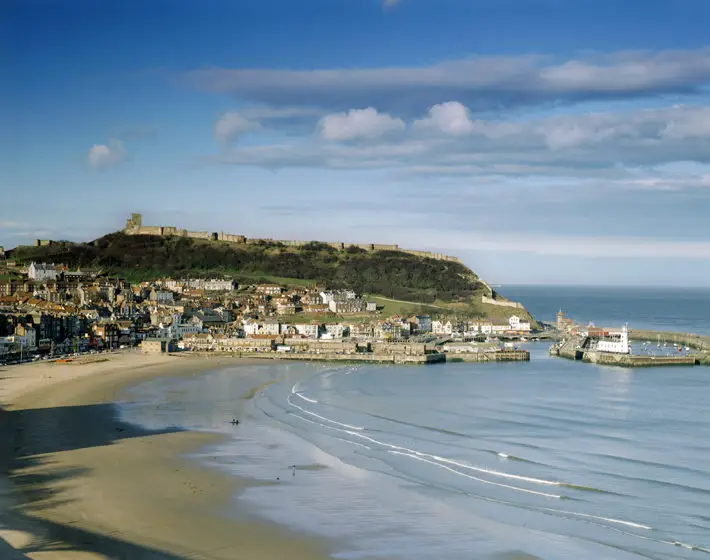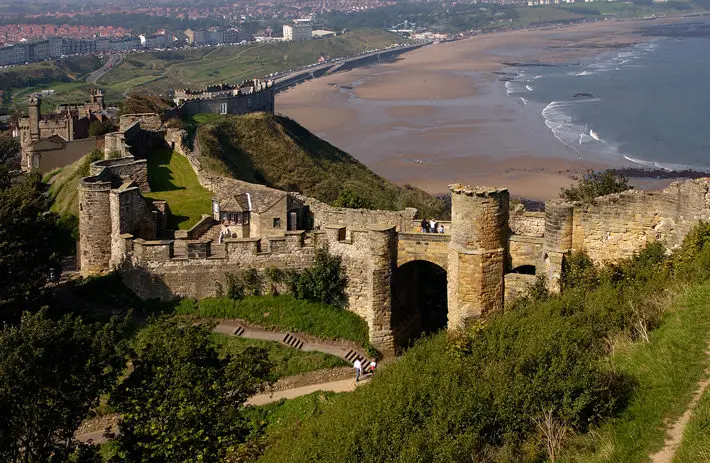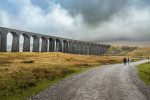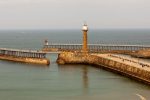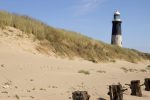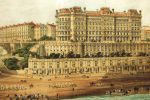A Potted History of Scarborough Castle
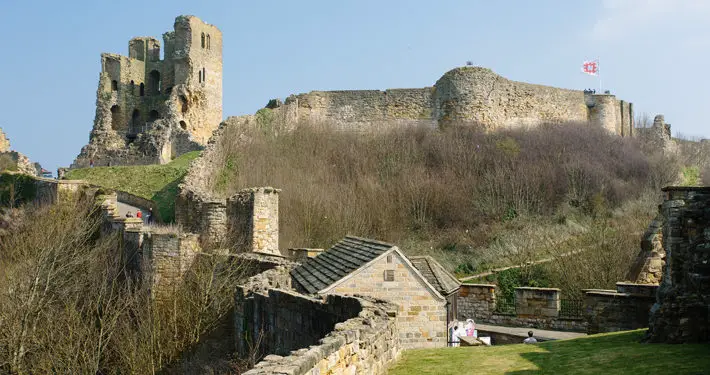
By Dr Mark Douglas
Scarborough Castle, situated on a prominent cliff-top overlooking the town, has for thousands of years been the location of settlement and defence. In addition to the 12th-century castle, are the buried remains of a Bronze Age settlement, a Roman signal station, the site of an 11th century chapel and an 18th-century gun battery.
The castle dates from the 12th century, with the first structure on the site being built by William le Gos, duke of Albermarle. It was appropriated by Henry II in 1159 and it remained a royal castle until 1619. In the early 13th century King John made huge investments in the structure and defences of the castle including all of the surviving towers of the curtain wall.
Henry III built the drawbridge and barbican in the 1240s then for the remainder of the medieval period there appears to have been little or no major construction or alteration works at Scarborough.
“Massive bombardment”
The next major impact on the nature of the structure took place during the Civil War when the castle changed hands several times and at one point was subjected to a massive bombardment, which resulted in the west wall of the keep being completely destroyed. Also during this period coastal defences, Bushell’s Battery and South Steel Battery, were added to the promontory.
In the 18th century Scarborough was put on a state of readiness to counter any threat arising from the Scottish Jacobite Rebellion; the Master Gunner’s House and a barrack block were constructed. The castle again sustained some damage during the early part of the 20th century when in December 1914 the town of Scarborough was bombarded by German battle cruisers. During the Second World War the castle was the location of a listening station which relayed vital military intelligence to the code breaking facility of Bletchley Park.
Scarborough castle was also the scene for events of a less martial nature. The area of the castle known as Castle Hills was the location of the first pitch used by Scarborough Cricket Club. Established in 1849, the club’s new pitch occupied the same position as the local Rifle Volunteers’ firing range and it was not unusual for dates of matches to coincide with those of shooting practice. It must be presumed that rifle practice took precedent and it was this which prompted the club to relocate to North Marine Road in 1871.
“Record breaking”
It was the game of Cricket which was the centre-piece to one of the least known episodes to take place at Scarborough Castle. It was in August 1868 when a visiting cricketing eleven, a team made up entirely of Aboriginal Australians, played in a demonstration match at the castle. The Australians, the first touring side from that country, arrived in England on the 12th May and immediately set out on a national tour.
They played at grounds from Gravesend to Tynemouth and not only gave displays of cricketing excellence, but also as one news report of the time put it, “dressed in their native costume, performed feats with spears and boomerangs with a precision and grace which was both pleasing and surprising to behold.” The team played three days of cricket at Scarborough Castle with a good turnout on the first day a disappointing crowd for day two, apparently the weather was cold and windy and a record breaking crowd of 4000 for the cricket plus native sports of day three.
The Australians went on to play a number of games in the North of England, but that leg of the tour came to an abrupt end after a member of the crowd at Bootle was badly injured by a wayward boomerang. Returning first to London and then yet more matches in the south and south east, the tourists eventually left for home in October.
For more info on Scarborough Castle visit english-heritage.org.uk/scarborough-castle
